Sedentary behavior and physical activity predicting depressive symptoms in adolescents beyond attributes of health-related physical fitness
Gene L.Farren*,Tao Zhang,Xiangli Gu,Katherine T.Thomas
Department of Kinesiology,Health Promotion,and Recreation,University of North Texas,Denton,TX 76203,USA
AbstractBackground:Sedentary behavior(SB),physical activity(PA),and attributes of physical fitness have been shown to be related to depressive symptoms in adolescents.The purpose of the present study was to investigate whether SB and fitness-producing activity predicted depression in active adolescents over and above gender and fitness attributes.Methods:Participants were 249 adolescents(age:12.85±0.89 years,mean±SD)from 3 public middle schools who wore Actical accelerometers to assess their SB and PA.Participants also completed the FITNESSGRAM health-related fitness assessment and a brief depression questionnaire.A 3-step hierarchical regression analysis was conducted with gender and fitness attributes(i.e.,body mass index(BMI),maximal volume oxygen uptake(VO2max),curlups,and pushups),moderate-and vigorous-intensity activity,and SB entered in respective steps.Results:Regression analysis indicated activity variables(i.e.,moderate-and vigorous-intensity activity)significantly predicted depression(ΔR2=0.12,p<0.01)beyond gender and fitness attributes.Overall,gender, fitness attributes,activity variables,SB explained 31%of the variance in depression.Structure coefficients revealed VO2max(rs=-0.77),moderate-intensity activity(rs=-0.67),vigorous-intensity activity(rs=-0.81),and SB(rs=0.57)were substantially correlated with the criterion variable;thus,they were the strongest predictors of depression.Conclusion:The findings of the current study indicated SB and PA were both significant predictors of depression;however,suf ficient fitnessproducing activity and adequate cardiorespiratory fitness may nullify the negative in fluence of SB on depressive symptoms in active adolescents.
Keywords:Accelerometers;Adolescent health;Cardiorespiratory fitness;FITNESSGRAM;Mental health;Moderate-to-vigorous-intensity activity


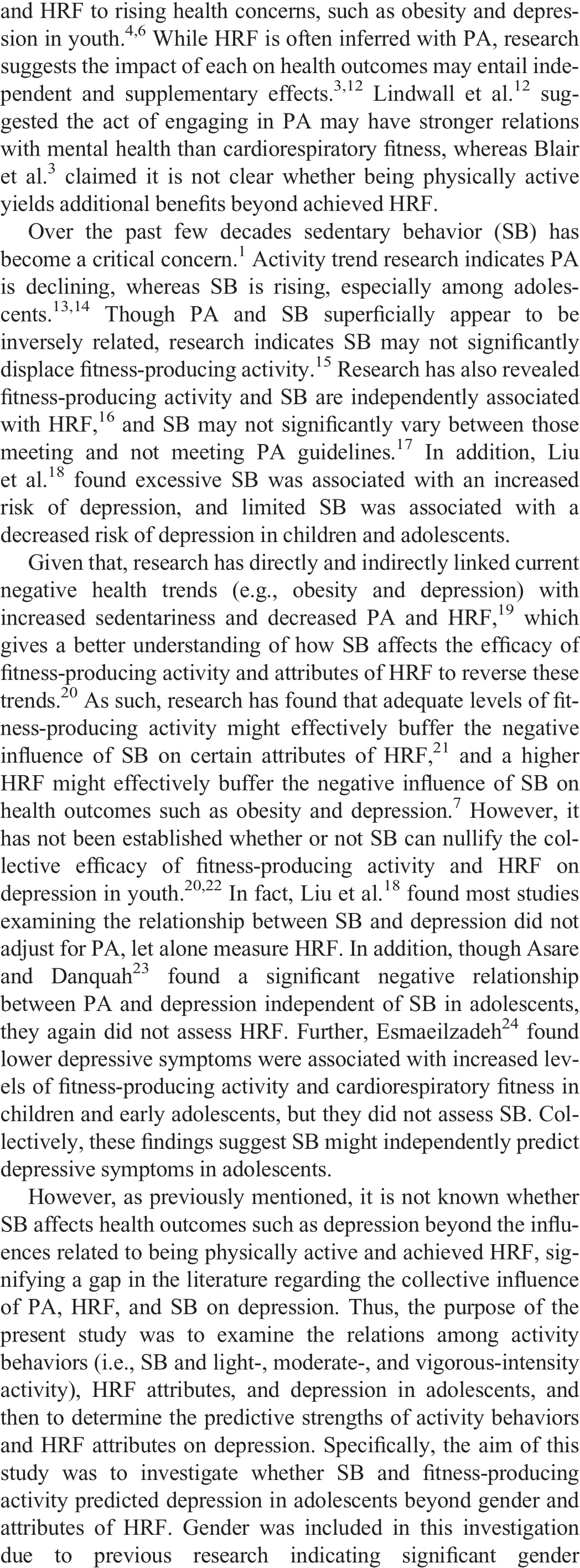
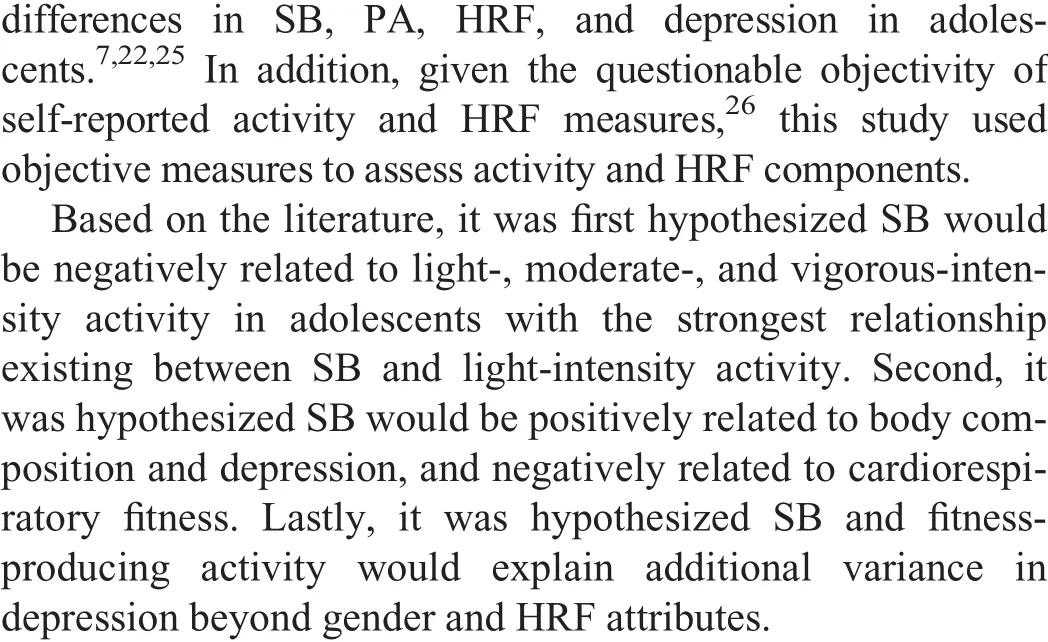



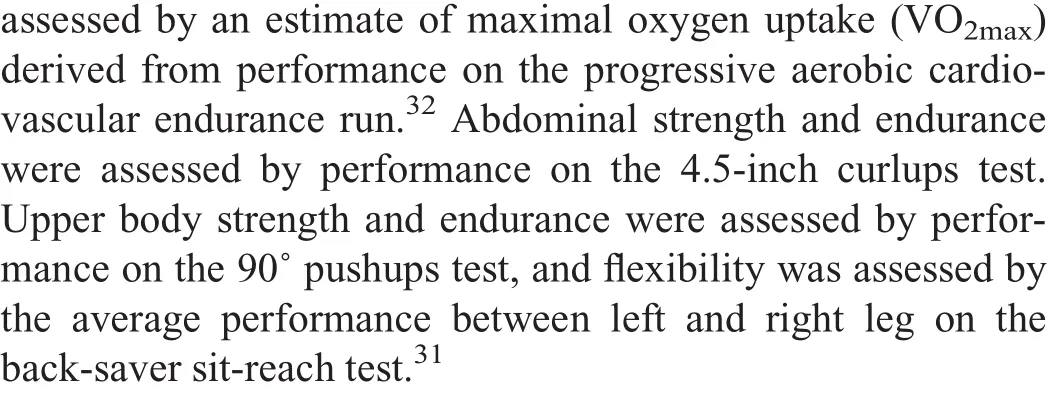
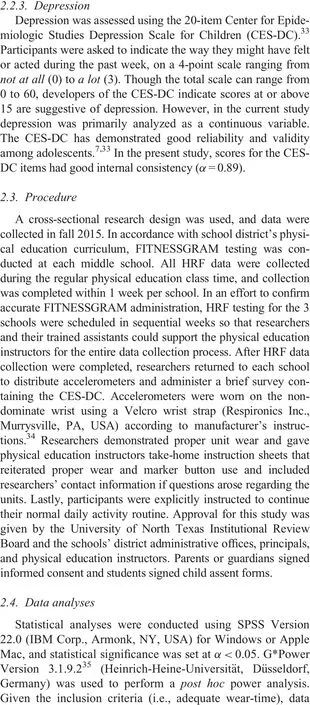


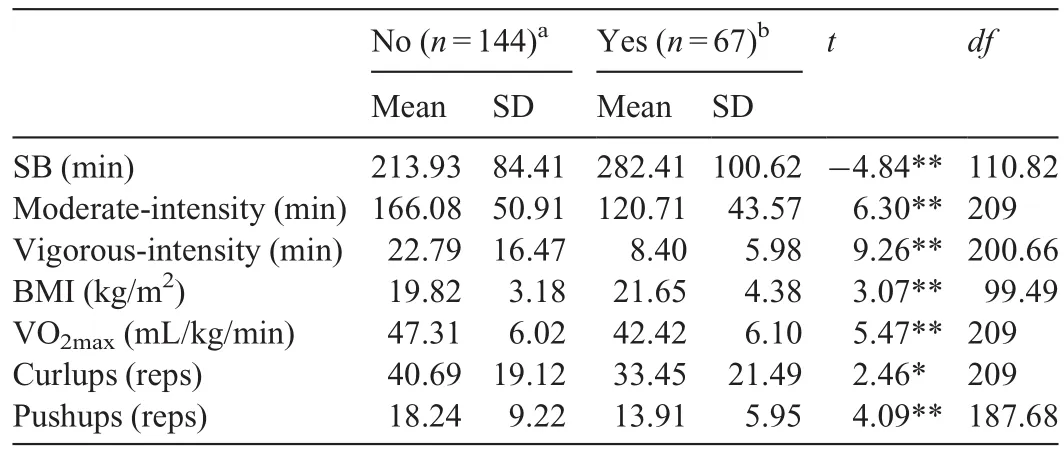
Table1 Summary of the independent-samples t tests.
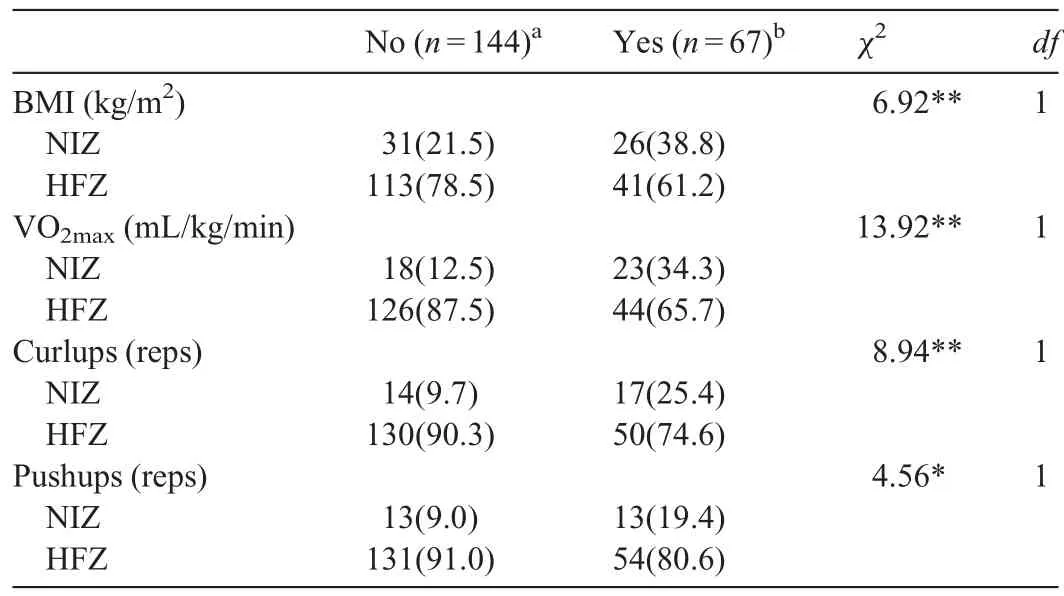
Table2 Summary of the independent-samples x2tests(n(%)).

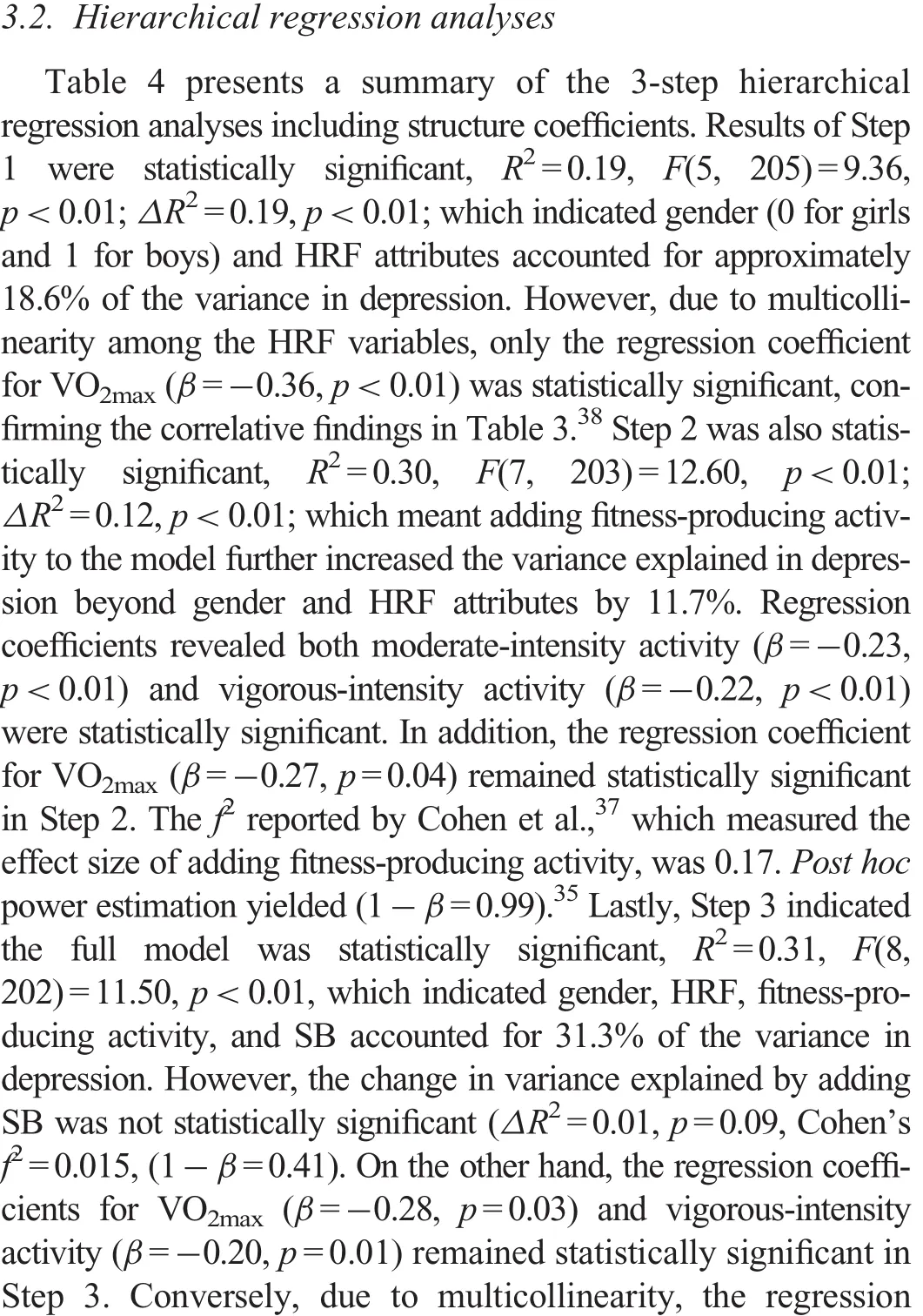

Table3 Correlation matrix including means±SD for activity, fitness,and depressionavariables.

Table4 Summary of the 3-step hierarchical regression analysis predicting depression.#

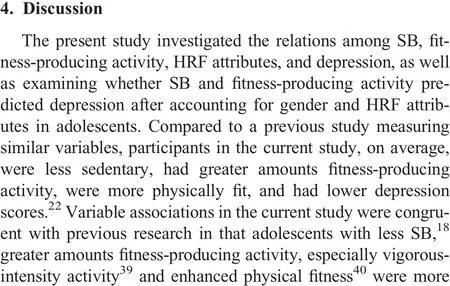
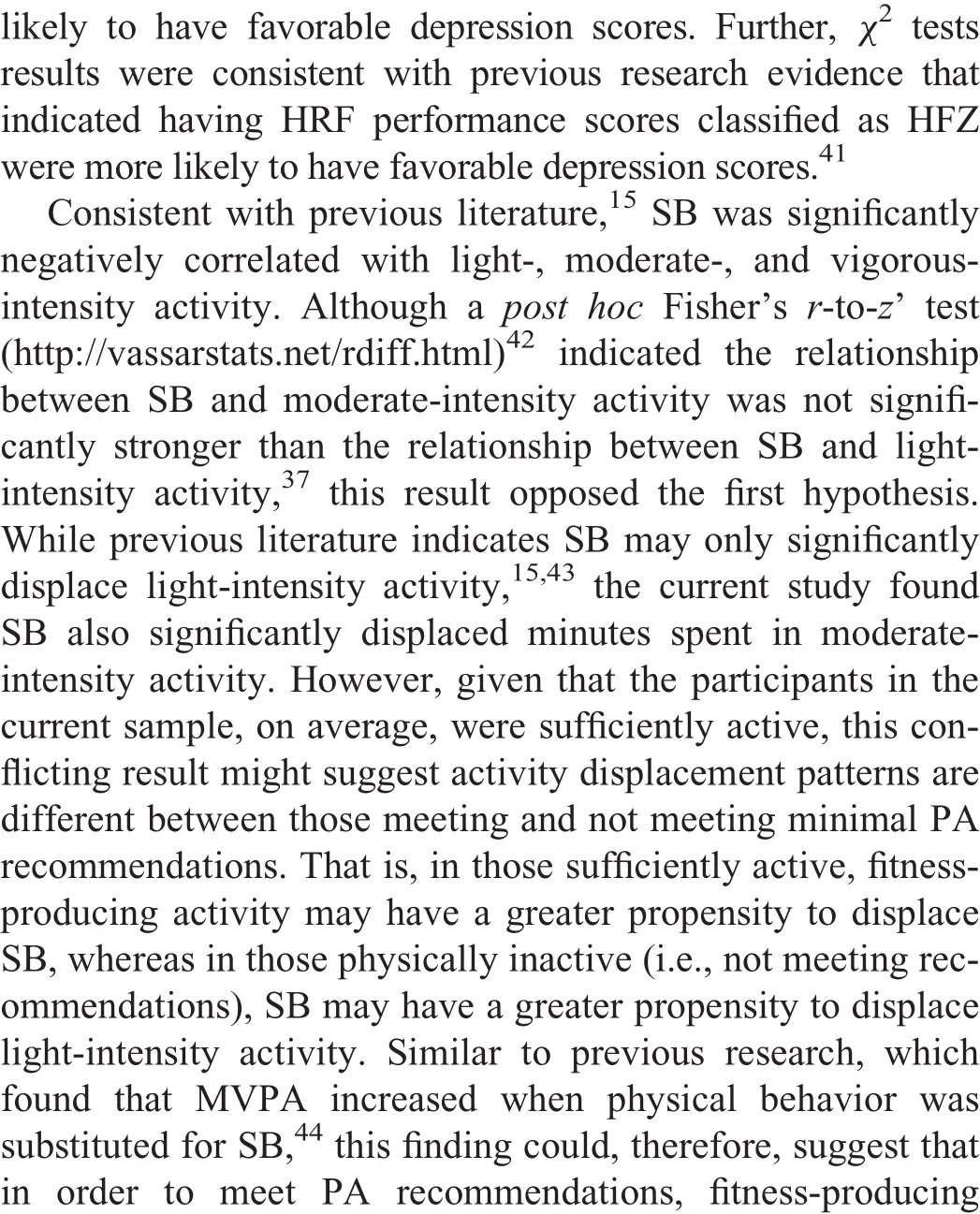
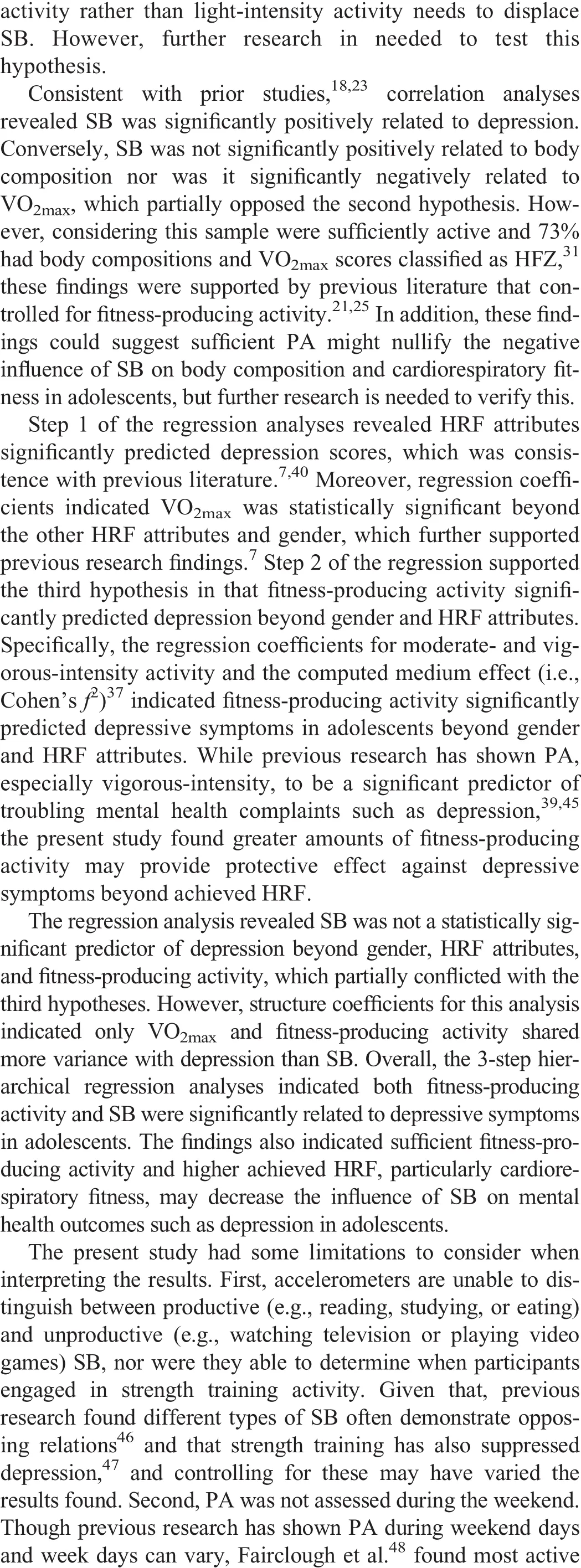
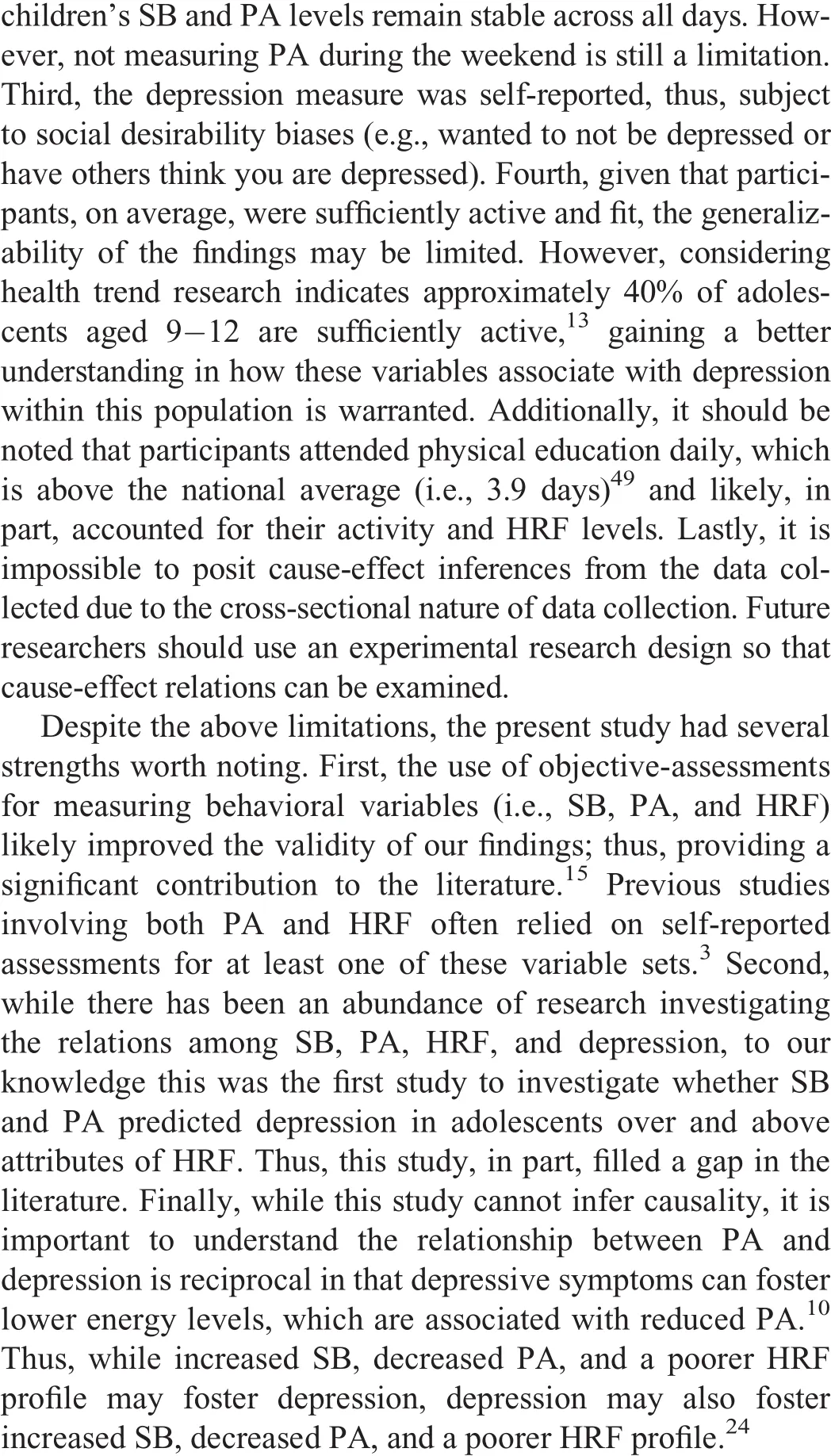
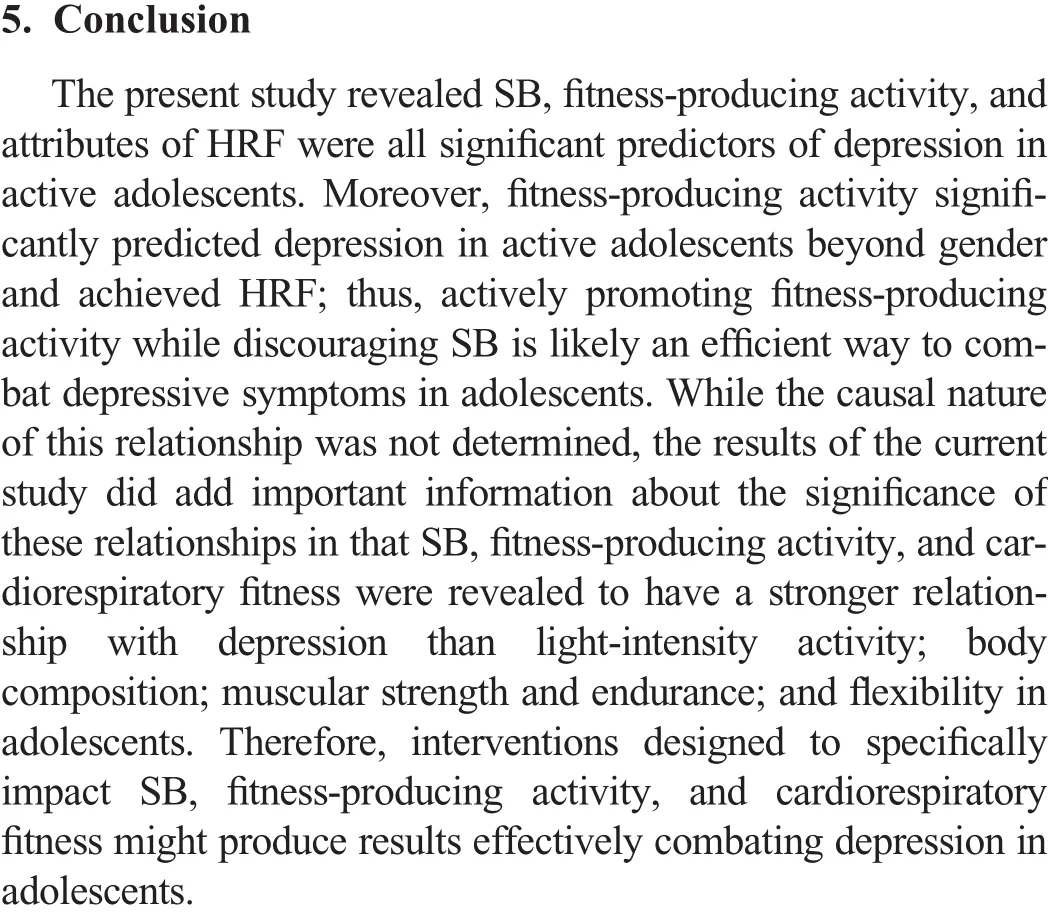
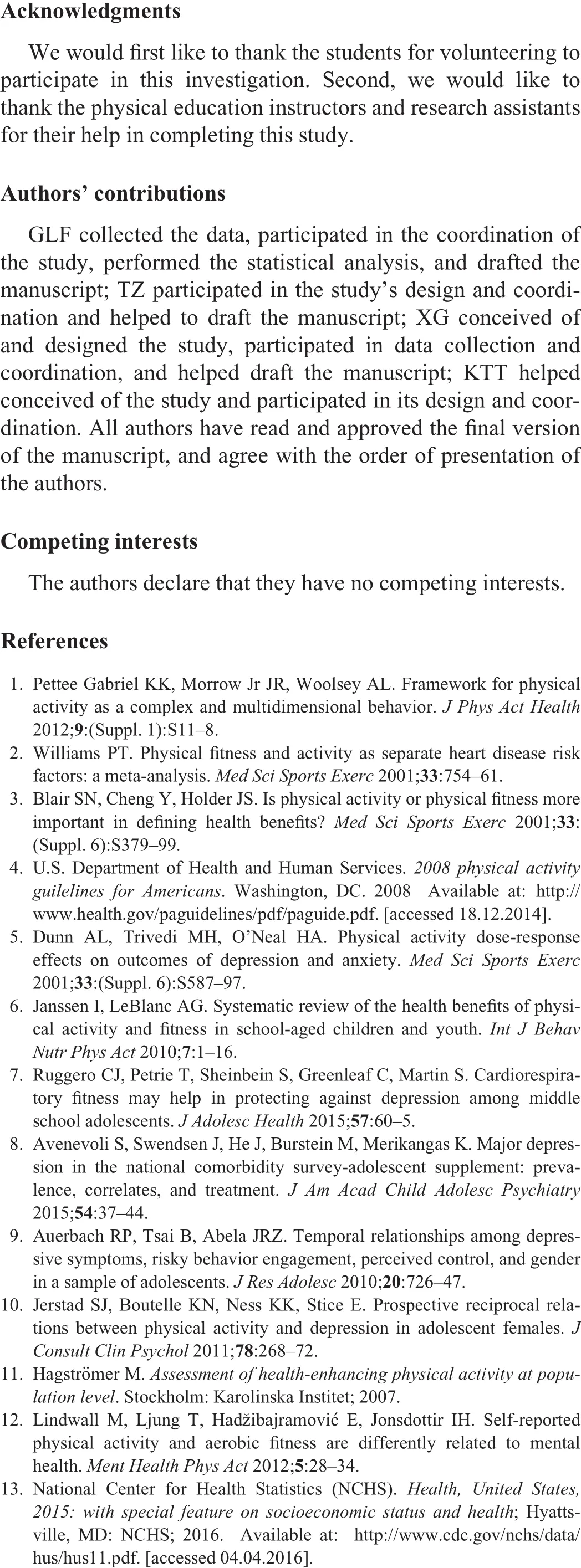
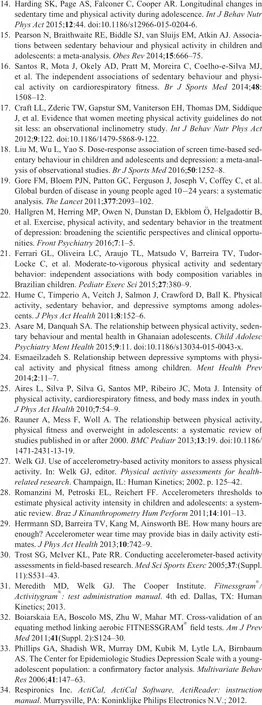
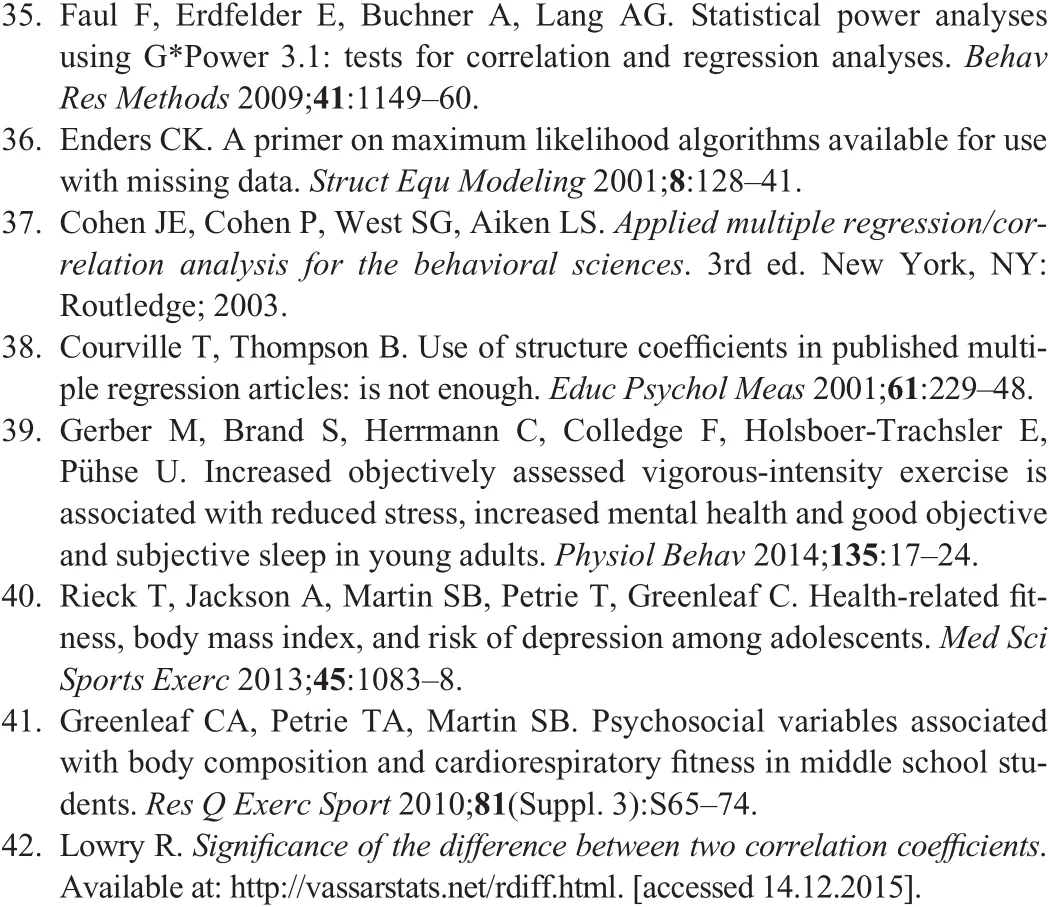

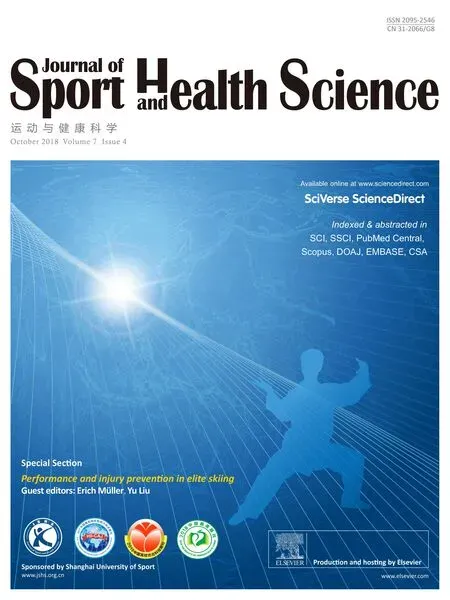 Journal of Sport and Health Science2018年4期
Journal of Sport and Health Science2018年4期
- Journal of Sport and Health Science的其它文章
- Sport participation and vigilance in children:In fluence of different sport expertise
- Pacing and predictors of performance during cross-country skiing races:A systematic review
- he in fluence of physiobiomechanical parameters,technical aspects of shooting,and psychophysiological factors on biathlon performance:A review
- Limb symmetry index in competitive alpine ski racers:Reference values and injury risk identification according to age-related performance levels
- A comparison of lower limb stiffness and mechanical muscle function in ACL-reconstructed,elite,and adolescent alpine ski racers/ski cross athletes
- he BRICS Council for Exercise and Sport Science(BRICSCESS)—A new era has dawned
